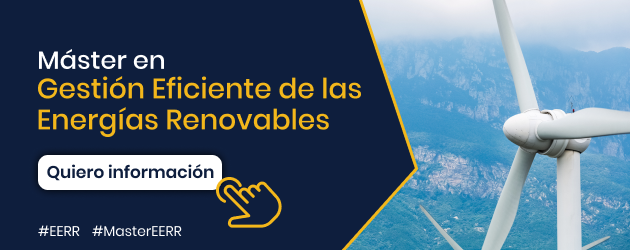When we talk about renewable energy, we usually think of the sun or wind as the protagonists. However, beneath the surface of the oceans lies an immense, yet largely unexplored, energy potential. Ocean energies, such as tidal and the wave power (wave energy) represent emerging sources that could transform the way we generate electricity sustainably. Although these technologies are in the early stages of development compared to solar or wind power, their ability to generate clean, consistent energy is attracting growing global interest.
But what exactly are these energies? How do they work? And, most importantly, why should we pay attention to them now more than ever?

How Does Tidal and Wave Energy Work?
Tidal energy is based on the tidal force, a predictable phenomenon resulting from the gravitational pull of the Moon and Sun on Earth. This energy is harnessed through the use of underwater turbines or barriers that channel water as it flows through high and low tides, generating electricity from the water's movement.
On the other hand, wave energy, also known as wave energy, captures the movement of the sea surface caused by the wind. Waves generate a continuous and powerful motion that, when converted into mechanical energy, produces electricity. There are several systems for harnessing this force, such as buoys that rise and fall with the waves, or devices that move horizontally with the movement of the waves.
Why is it important?
Both tidal and wave energy have the capacity to generate electricity in a constant and predictable, which makes them unique compared to other renewable sources that depend on meteorological factors. While wind and sun may be intermittent, tides and waves never stop.
Pilot projects: Success stories in the application of ocean energy
Although these technologies are still in the experimental phase, there are pioneering projects around the world that have demonstrated their viability. A notable example is the MeyGen In Scotland, the world's largest tidal energy farm has successfully supplied electricity to more than 2,600 homes. This project has been key to positioning Scotland as a leader in tidal energy development and demonstrates that ocean energy can be efficiently integrated into the electricity grid.
Regarding wave energy, the project Pelamis, also in Scotland, has been a benchmark. Although the project was suspended for financial reasons, it laid the groundwork for future research and development in this field, demonstrating that waves can be a constant source of energy, especially in regions with active coastlines.
Other projects such as the Wave Hub in the United Kingdom and Mutriku In Spain, which uses a wave energy plant on the Basque coast, they are proof of the growing interest in these technologies in regions with long coastlines and strong waves. These projects not only generate clean energy, but are also spurring innovation and creating local jobs in emerging sectors.

Environmental and Economic Benefits of Ocean Energy
1. Reduced environmental impact:
Unlike thermal or nuclear power plants, ocean energy does not produce greenhouse gas emissions. Furthermore, tidal and wave energy facilities have a much lower visual impact than, for example, wind or solar farms, as they are located underwater or close to the coast.
2. Constant and predictable energy:
The character predictable The use of tides and waves offers a significant advantage. Unlike the sun or wind, which can vary depending on the time of day or weather conditions, tides follow constant cycles that facilitate energy planning.
3. Reducing dependence on fossil fuels:
By exploiting the natural resources of the sea, tidal and wave energy can reduce dependence on fossil fuels, helping to mitigate the impacts of climate change and promoting energy security in regions with limited access to other renewable sources.
4. Job creation and technological development:
The growth of these energies also means new job opportunities in areas such as marine engineering, research, and maintenance. Furthermore, driving technological innovation in this sector can position pioneering countries as leaders in clean technology exports.
Technological and regulatory challenges for mass adoption
Despite its benefits, ocean energy faces several challenges.
1. High initial cost:
Developing infrastructure to capture ocean energy requires significant investments. Underwater turbines and wave harvesting systems are expensive to install and maintain due to the harsh conditions of the marine environment.
2. Regulation and permits:
Obtaining permits to install ocean infrastructure can be a lengthy and complex process, as strict environmental regulations must be met and facilities must be guaranteed not to interfere with marine life or fisheries.
3. Need for technological innovation:
Tidal and wave technologies are in the early stages of development, which means that further work is still required. research and development to make them more efficient and cost-effective. However, advances in materials and automation are accelerating the maturity of these systems.
Conclusion: Why ocean energy could be the future
Tidal and wave energy represent a field with great potential for the future of renewable energy generation, potentially being fundamental to the future of the energy transition for several reasons.
1. Availability and consistency:
Unlike other renewable energies such as solar or wind, which depend on the weather or the time of day, ocean energy is more predictable and constant. Tides, for example, follow patterns established by the gravitational forces of the Earth and the Moon, making them extremely predictable over the long term. This represents a major advantage in energy management, as it ensures a stable and reliable supply of electricity.
In Europe, they could cover 10% of electricity consumption by 2050, with an expected capacity of 30-40 GW.
2. Great energy potential
The ocean is a vast source of untapped energy. According to a study by the International Renewable Energy Agency (IRENA), the technical potential of ocean energy globally is estimated at 1200 GW, sufficient to cover the annual energy consumption of dozens of countries. Europe, with its long coastline and access to seas like the Atlantic and the North Sea, is uniquely positioned to take advantage of this resource.
3. Technological and economic development
Although still in the development phase, the harnessing of ocean energy is advancing rapidly with flagship projects. The United Kingdom is leading the way in this sector, with initiatives such as MeyGen, the largest tidal park in the world, capable of generating up to 400 MW.
Europe in general, with the United Kingdom at the top, followed by France, Portugal and Spain, with Mutriku, on the Basque coast, are at the forefront of implementing these technologies. Generation costs are expected to decrease over time, which will improve their competitiveness in the energy market. Furthermore, the ocean industry could generate more than 400,000 jobs by 2050, boosting economic growth and developing a local supply chain. This will allow Europe to diversify its energy mix while creating a new industry focused on technological innovation and sustainability.
4. Sustainability and emissions reduction
Ocean energy not only has a low environmental impact in terms of CO₂ emissions, but also minimizes other impacts such as land use and noise pollution. Furthermore, as a local and renewable source, ocean energy reduces dependence on fossil fuels and energy imports, which is key to the region's energy security.
The European Union aims to achieve the carbon neutrality by 2050, and ocean energy is a crucial part of that plan. According to estimates, the widespread implementation of these technologies could prevent up to 500 million tons of CO₂ per year by mid-century.
5. Economic and geopolitical context
The energy crisis in Europe, exacerbated by Russia's invasion of Ukraine in 2022 and its reliance on Russian gas, has accelerated the transition to renewable energy. Ocean energy offers an opportunity to reduce this dependence and increase the energy independence from Europe. Although they are currently more expensive than other renewable sources, their costs are expected to decrease between 50-70% by 2030, making this technology a more affordable and viable option in the long term.
Ocean energies, with their enormous generating capacity and their predictability, they could be the next giant leap toward a clean and stable energy future. With the right investments and government support, we could be embarking on a new era of ocean-based renewable energy.
Key facts:
- Predictable and reliable generation: They offer constant and predictable energy, unlike solar and wind.
- Successful projects: They highlight the project MeyGen in Scotland and Mutriku in Spain, demonstrating the viability of these technologies.
- Environmental benefits: They do not generate CO₂ emissions and have a lower visual impact than other renewables.
- Technological challenges: High initial costs and complex regulations make implementation difficult.
- Energy independence: They would help reduce Europe's dependence on fossil fuels, and costs could fall by as much as 70% by 2030.
Job growth: Ocean energy could generate more than 400,000 jobs by 2050. - MeyGen (Scotland): 1.5 MW tidal energy park with installed capacity, capable of generating electricity for 2,600 homes.
- Mutriku (Spain): Wave power plant on the Basque coast, which has generated more than 1.3 GWh since its inauguration in 2011.
Did you know that…?
Ocean energies have the potential to generate up to 30 GW of energy worldwide, enough to supply millions of homes with clean electricity.
Learn more about our school and training in our blog



































